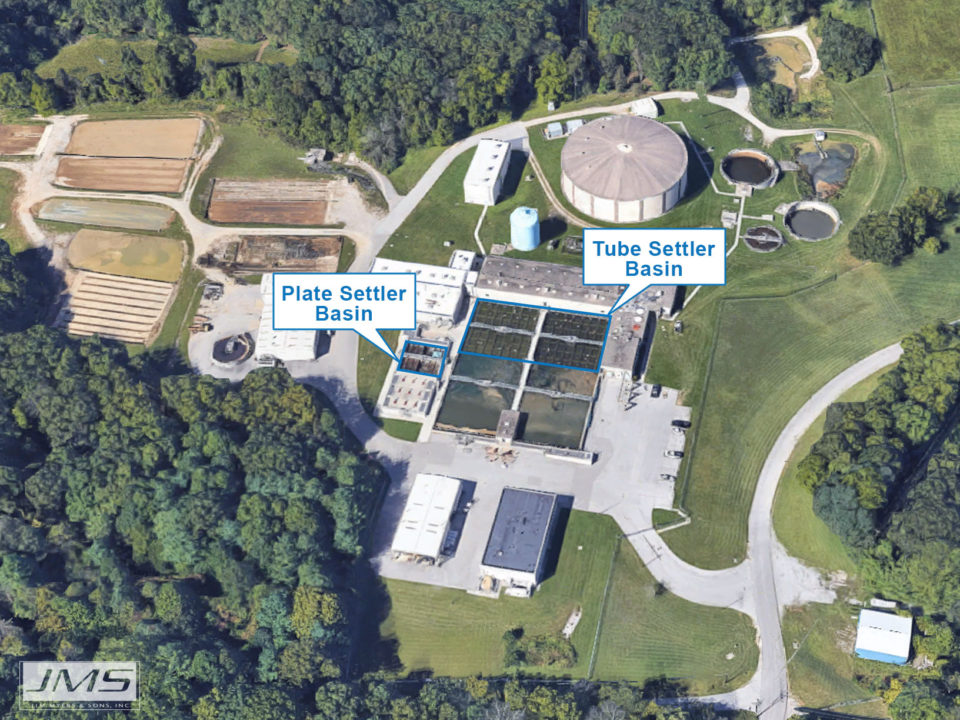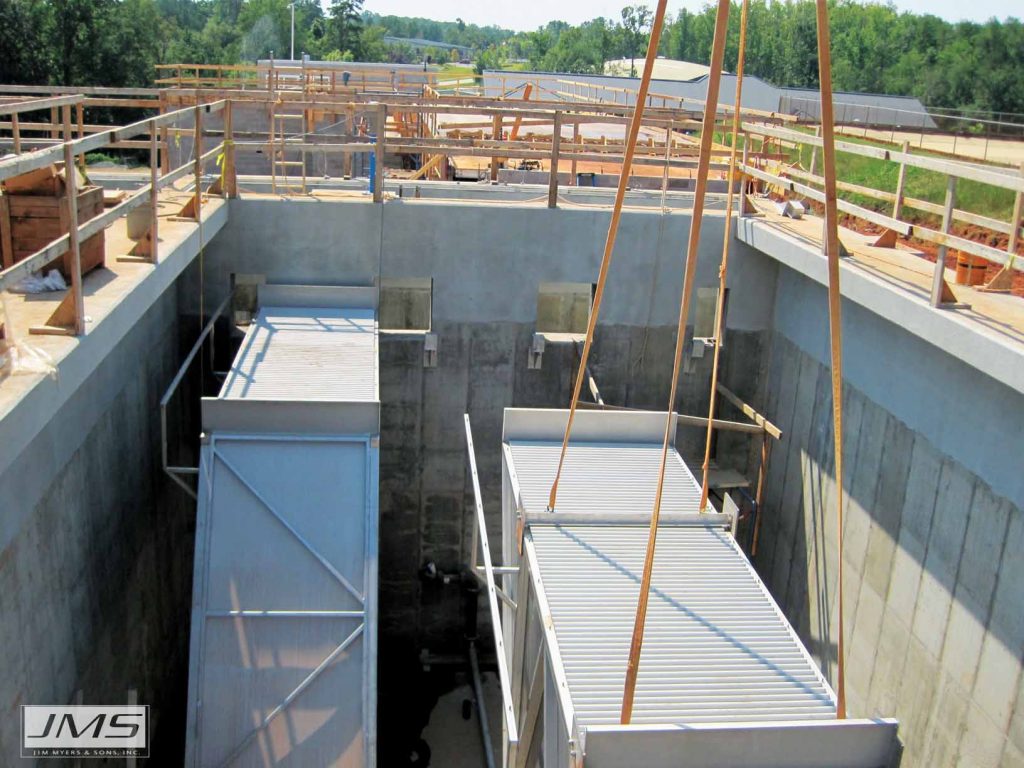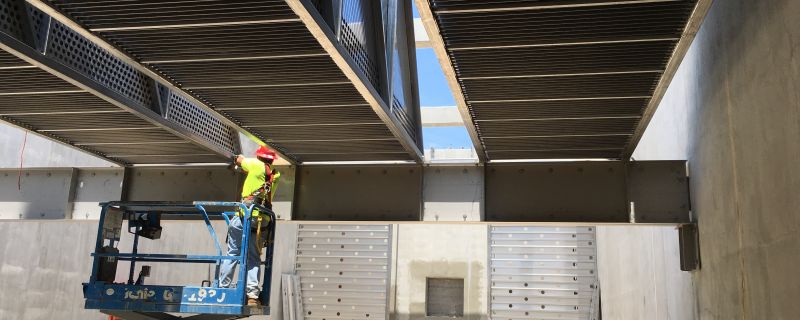Inclined Plate Settlers are used in the sedimentation process of both water treatment and wastewater treatment plants. In this process there are two popular styles used, tube settlers and inclined plate settlers. Both of these styles use the same theory to accomplish the goal of removing suspended particles that are heavier than water by gravity settling. Inclined Plate Settlers are becoming one of the most popular pieces of equipment used in sedimentation process due to their efficiency and small space requirements. What even are plate settlers, why would a plant use them, how would you get the most out of a plate settler? These are some common questions about plate settlers and are the backbone of plate settler rules of thumb.
Inclined Plate Settler Rules of Thumb: The Why
Over the last decade Plate Settler equipment has become the “go-to” for high rate sedimentation basins. The rate of adoption of this technology is surprising, but due to sound reasons. Reasons for the short timeline associated with this advancement are:

- The fact that Plate Settlers can process large amounts of water in a very small footprint. This is key since many plants have urban sprawl growing up around them and land is scarce.
- Plate Settlers are very reliable when it comes to reducing turbidity and handling turbidity spikes in incoming water.
- Plate Settlers are quite effective with pin-floc (very fine particles that have poor settling characteristics) which can sometimes result in carry-over and high turbidity.
Municipalities see the Plate Settler as a wise investment due to their reliability. The Plate Settler is made of 100% stainless steel and has no moving parts, and requires no power, yielding a low life cycle cost. The only maintenance requirement for this equipment is a wash-down two or three times per year. Low life cycle cost, and performance reliability general outweigh the initial cost of Plate Settlers.
Existing plants often need to increase their capacity to handle future population growth, but are short on land. The Plate Settler is a tool that will work with their existing infrastructure (existing basins) to accomplish this. Older plants have large sedimentation basins that were designed for a four hour detention time. Plate settlers can be retrofitted into these locations to dramatically increase their capacity. In many cases the plant will choose to upgrade their filtration as well.
Inclined Plate Settler Rules of Thumb: The How
The “How” of getting the most out of Plate Settlers revolves around best principles used in the design of the system. Proper design is critical to optimize capacity and performance. Key variables are:

- Application rate applied to the projected horizontal surface area. This is expressed in gallons/minute/ft2 and will run in the range of 0.2-0.5 with the standard being 0.3 g/min/ft2. The 10 States Standards sets the efficiency rate at 80%; however this can range to 90 or even 100%. These two variables taken together set the velocity of water going up through each plate. Gravity acts against the particles in the upward flowing water to cause settling.
- The length to width ratio is also critical. Generally basins are designed for 2:1 or 3:1, length:width ratio. Existing basins may vary from this somewhat and accommodation can be made for other combinations.
- Side water depth should range from 14-17 feet, with 16 being common in newly constructed systems. For existing systems that do not have that great of side water depth, shorter plates can be used.
- The space under the plates cannot be overlooked. This is known as the sludge blanket zone and should not extend into the plate area interfering with the settling process. Generally about 6 feet is needed in this area for a mid- sized plant of 5-100 mgd.
- Velocity of the water across the basin. This variable and its relationship to performance are currently being studied.
Inclined Plate Settler Rules of Thumb: The What
After a properly designed system is in place, the “What” that we should do to optimize the system for best long-term performance is centered around optimizing flocculation. This includes choosing the best chemical flocculent and feed strategy. Incoming turbidity may vary from day to day including times after a storm when the plant could see incoming turbidity spikes. Optimization of chemical use for each situation will involve additive suppliers, and a lot of data generated at the plant level and correlated for trends. Data trends for influent turbidity, chemical feed, and effluent turbidity can often tell the story. One example of this is a local plant whose chemical feed strategy was to feed enough chemical to produce the lowest turbidity. What they found after additional experience was that lower turbidities did not mean longer times between membrane backwash cycles. They were able to cut back on the chemical feed and save significant dollars without affecting overall plant performance.
Plate Settlers are here to stay, and more and more surface water plants are installing them each day. Getting the most out of this equipment relies on starting with the best design and optimizing system variables such as chemical addition. Suppliers can play a key role in each process and are willing to act as a member of the team to ensure best results.
Kerry Dissinger has been employed by JMS for the last 10 years, and currently holds the position of Vice President. Prior to receiving a BS degree in Electro Mechanical Engineering, Kerry served for 3 years as a US Army Paratrooper stationed at Fort Bragg, NC. He also served 6 years in the Pennsylvania Army National Guard. Kerry’s nearly 20 years of experience in the water and wastewater industry includes 10 years at Brentwood Industries where he was mentored by the esteemed Dr. McDowell. With his strong background in the water and wastewater process, particularly sedimentation, he is focused on continued growth and innovation, holding several active patents for JMS products. One of Kerry’s favorite sayings is: It’s not about ideas; it’s about making ideas happen.

